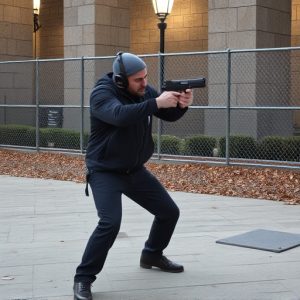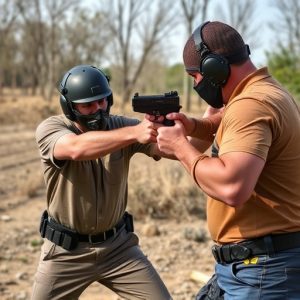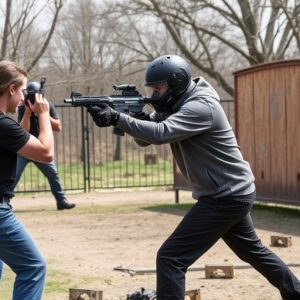Legal Stun Guns: Navigating Regulations for Concealed Carry
Understanding local laws is crucial before purchasing a stun gun, as regulations vary widely regardi…….
Understanding local laws is crucial before purchasing a stun gun, as regulations vary widely regarding who can carry them, where, and how they must be stored, balancing personal protection with public safety. The most powerful legal stun weapons vary by state, ranging from 50,000 volts to lower outputs, with advanced design features for user safety and concealment. These devices utilize high-voltage, low-current electrical currents to temporarily incapacitate attackers without causing permanent harm. Regulations govern their open or concealed carry, permit requirements, training, and specific models approved in different U.S. states.
“In an era where personal safety is paramount, understanding concealed carry stun gun regulations is essential. This comprehensive guide delves into the intricate world of stun weapon laws, offering a clear overview for responsible citizens. From defining these powerful yet legal devices to exploring their effectiveness and use cases, we navigate state-specific rules. Discover the most powerful legal stun weapons available and learn about licensing requirements, ensuring you’re well-informed in today’s digital age. Get ready to unlock the facts behind concealed carry regulations.”
- Understanding Concealed Carry Laws: An Overview
- Legal Definitions of Stun Guns and Their Classification
- The Power and Effectiveness of Legal Stun Weapons
- Where and When Can You Legally Use a Stun Gun?
- Licensing and Training Requirements for Concealed Carry
- State-Specific Regulations: A Comprehensive Look
Understanding Concealed Carry Laws: An Overview
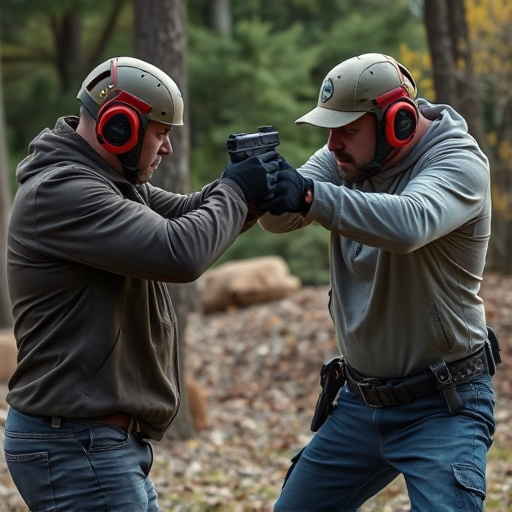
Understanding the laws surrounding concealed carry, especially when it comes to stun guns, is crucial for responsible ownership and safety. Each jurisdiction has its own set of regulations dictating who can carry a stun gun, where they can be carried, and how they must be stored. These rules are designed to balance personal protection with public safety.
The most powerful legal stun weapons, as determined by their electrical output, vary across states. Some regions allow devices with outputs as high as 50,000 volts, while others cap it at lower levels. It’s essential for prospective owners to research and understand these laws before purchasing a stun gun to ensure compliance and avoid legal repercussions.
Legal Definitions of Stun Guns and Their Classification
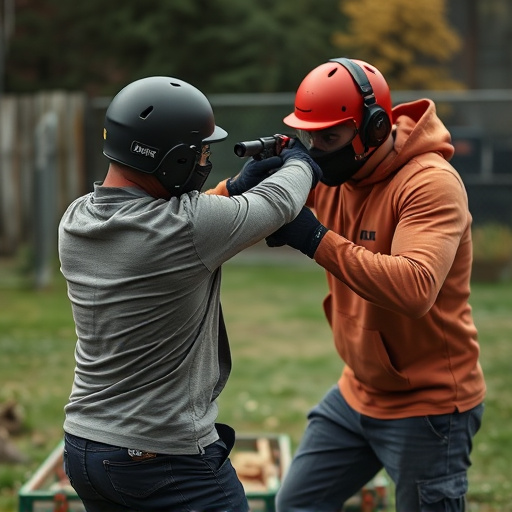
Stun guns, also known as electroshock weapons, are designed to incapacitate a target through the delivery of an electric current. Legally, stun guns fall under specific classifications based on their power and intended use. The most powerful legal stun weapons are typically categorized by their energy output in joules. These devices range from low-power models with outputs below 50 joules, suitable for personal protection, to higher-powered options exceeding 120 joules, which may require specialized training and licensing for lawful possession.
Regulations governing stun guns vary greatly across jurisdictions. Some areas classify them as firearms, subjecting owners to similar restrictions, while others treat them as non-lethal self-defense tools with less stringent requirements. Understanding these legal definitions and classifications is crucial when considering the acquisition of a stun gun for personal safety.
The Power and Effectiveness of Legal Stun Weapons
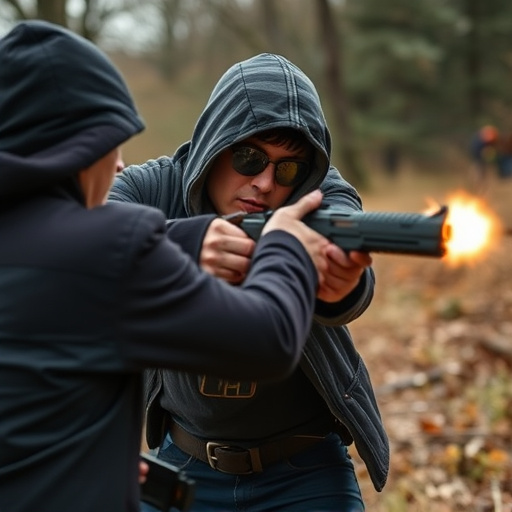
The power and effectiveness of legal stun weapons, often referred to as the most powerful legal stun guns, lie in their ability to incapacitate an attacker without causing permanent harm. These devices use electrical current to disrupt muscle control, leading to temporary paralysis. The most advanced models can deliver high-voltage, low-current shocks that are designed to subdue an assailant while allowing law enforcement officers and individuals to maintain consciousness and cognitive function.
The effectiveness of stun weapons is not just about the power of the shock; it’s also about the design and features that ensure accurate deployment in stressful situations. Modern legal stun guns often incorporate smart safety mechanisms, easy-to-use triggers, and durable construction to withstand rugged conditions. Their compact size makes them easily concealable, offering users a reliable tool for self-defense without drawing undue attention.
Where and When Can You Legally Use a Stun Gun?
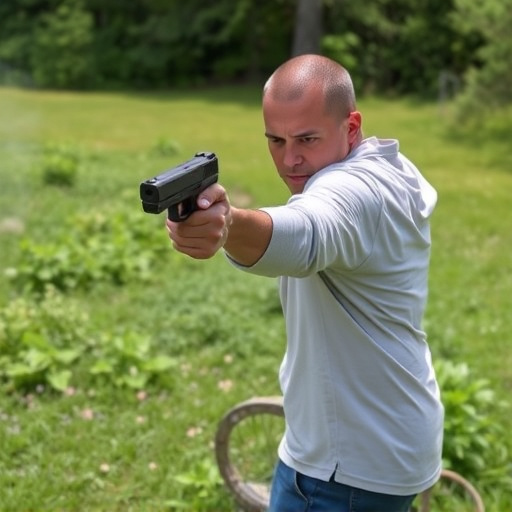
In many jurisdictions, the use of stun guns, or electroshock weapons, is regulated to ensure public safety and responsible ownership. While some areas prohibit their possession entirely, others have specific laws allowing their use for self-defense in certain circumstances. The most powerful legal stun weapons are typically those that deliver a high voltage, low amperage electric shock, designed to incapacitate an aggressor temporarily without causing serious harm.
These devices can be carried openly or concealed, depending on local regulations. Some states permit concealed carry of stun guns with a valid concealed carry permit, similar to firearms. Others may restrict their use to specific locations, such as private residences, vehicles, or places where self-defense against an imminent threat is deemed reasonable. Understanding the legal framework and applicable restrictions for your region is crucial before considering the acquisition and use of a stun gun for personal protection.
Licensing and Training Requirements for Concealed Carry
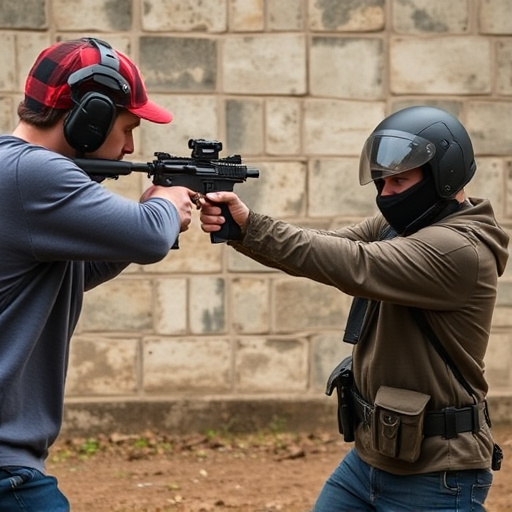
In many regions, individuals seeking to concealed carry a stun gun must adhere to stringent licensing and training requirements. These regulations vary across jurisdictions but generally involve obtaining a permit from local law enforcement agencies. Applicants are often required to pass a background check, prove their identity, and demonstrate proficiency in the safe handling and use of stun devices. Completing a certified training course is another critical step, ensuring that carriers understand the legal implications and responsible use of such powerful legal stun weapons.
Training programs cover various topics, including stun gun operation, self-defense strategies, and state-specific laws. Upon completion, individuals may be issued a concealed carry permit, allowing them to legally transport a stun gun while meeting specific safety and responsibility standards. Understanding and complying with these regulations are essential for citizens looking to protect themselves using the most powerful legal stun weapons available.
State-Specific Regulations: A Comprehensive Look
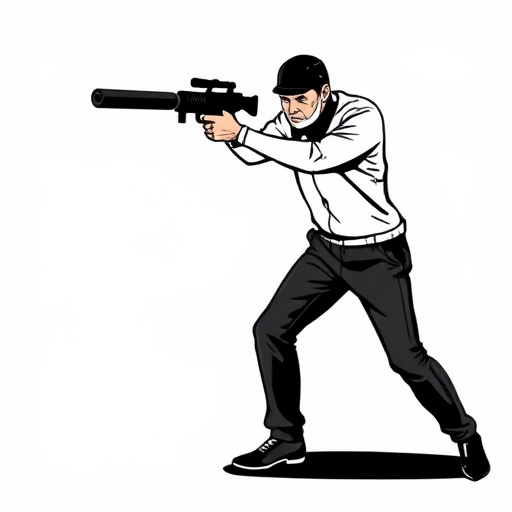
In the United States, regulations surrounding concealed carry stun guns vary significantly from state to state, shaping the accessibility and use of these powerful legal self-defense tools. Understanding these state-specific laws is crucial for individuals seeking to protect themselves and their loved ones. Each state has its own set of requirements, ranging from permit systems to size and voltage restrictions on stun devices.
When it comes to the most powerful legal stun weapons, states like Texas and Florida stand out with less restrictive regulations. These jurisdictions generally allow for higher voltage stun guns without a permit, making them easily accessible for responsible citizens. In contrast, other states impose stringent requirements, demanding permits and specific models approved by local law enforcement. This disparity underscores the diverse approaches to regulating concealed carry stun guns across the nation.
When considering concealed carry regulations, especially regarding stun guns, it’s crucial to understand both federal and state laws. The article has provided an in-depth look at these regulations, highlighting that while stun guns offer a non-lethal self-defense option, their power and effectiveness vary. The most powerful legal stun weapons are often defined by their joule output, but it’s also essential to consider the context of their use. Knowing where and when you can legally employ a stun gun is paramount, as are the licensing and training requirements that ensure responsible ownership. State-specific regulations further complicate matters, underscoring the need for thorough research and compliance to stay safe and avoid legal repercussions.
